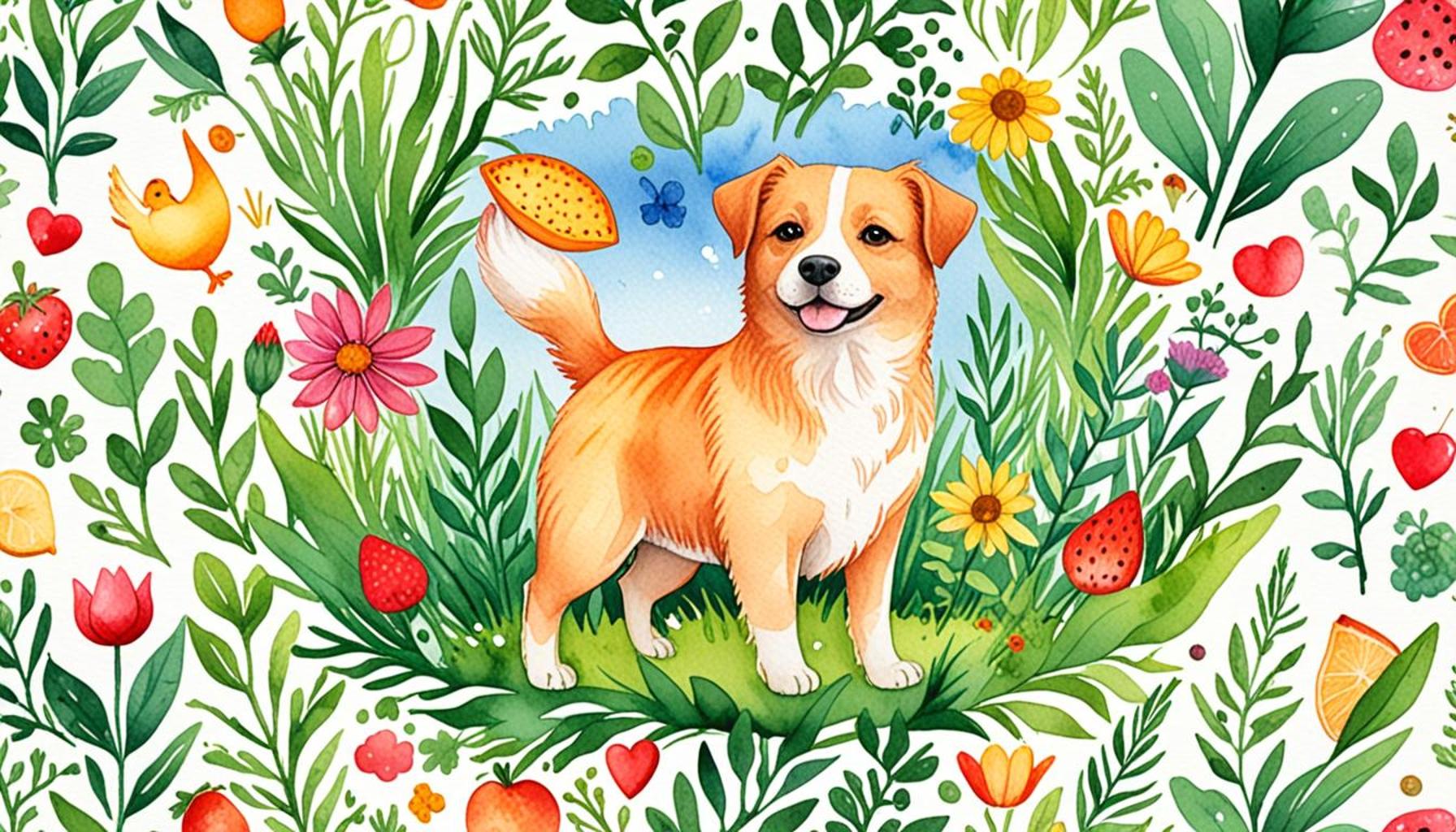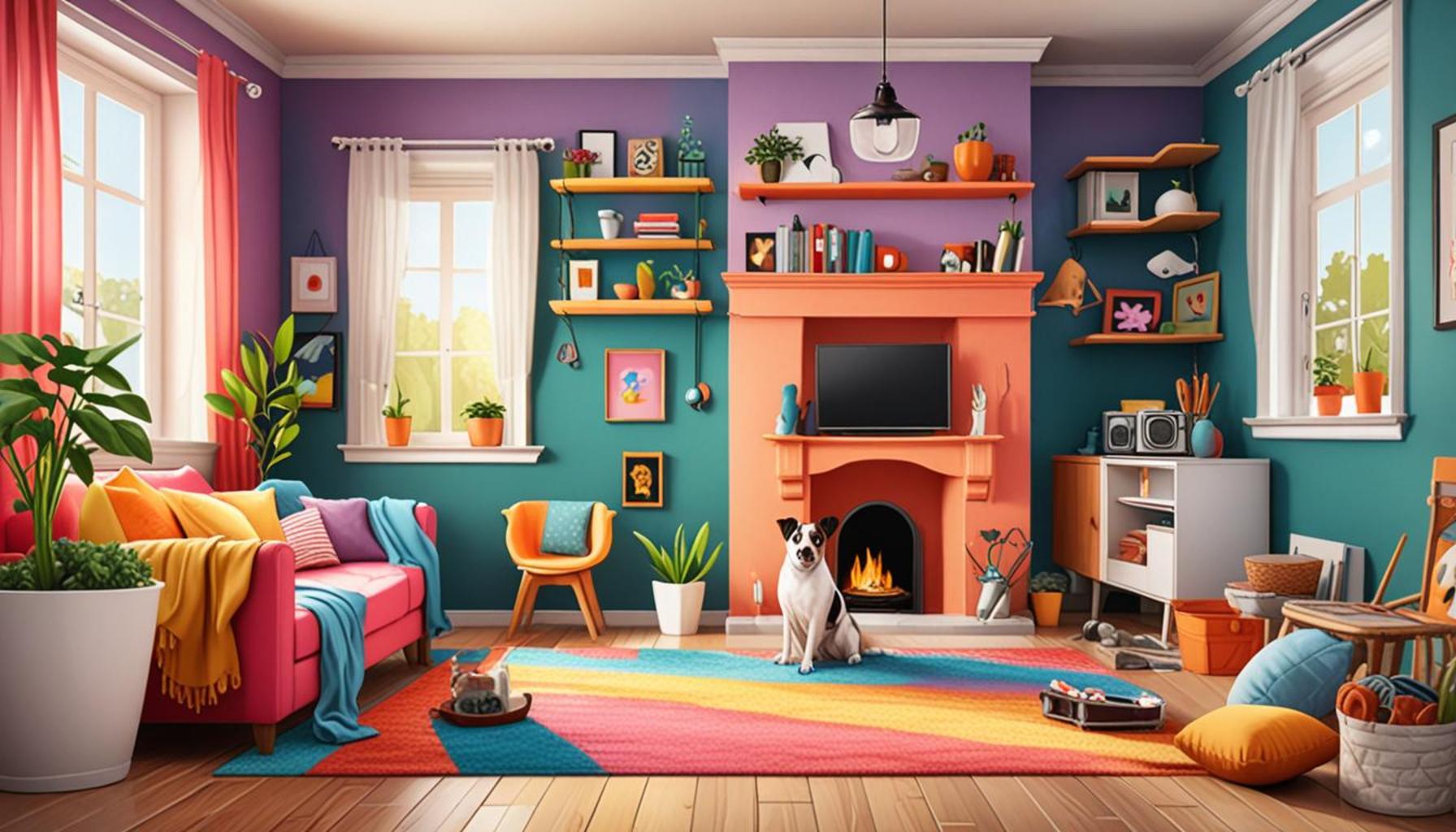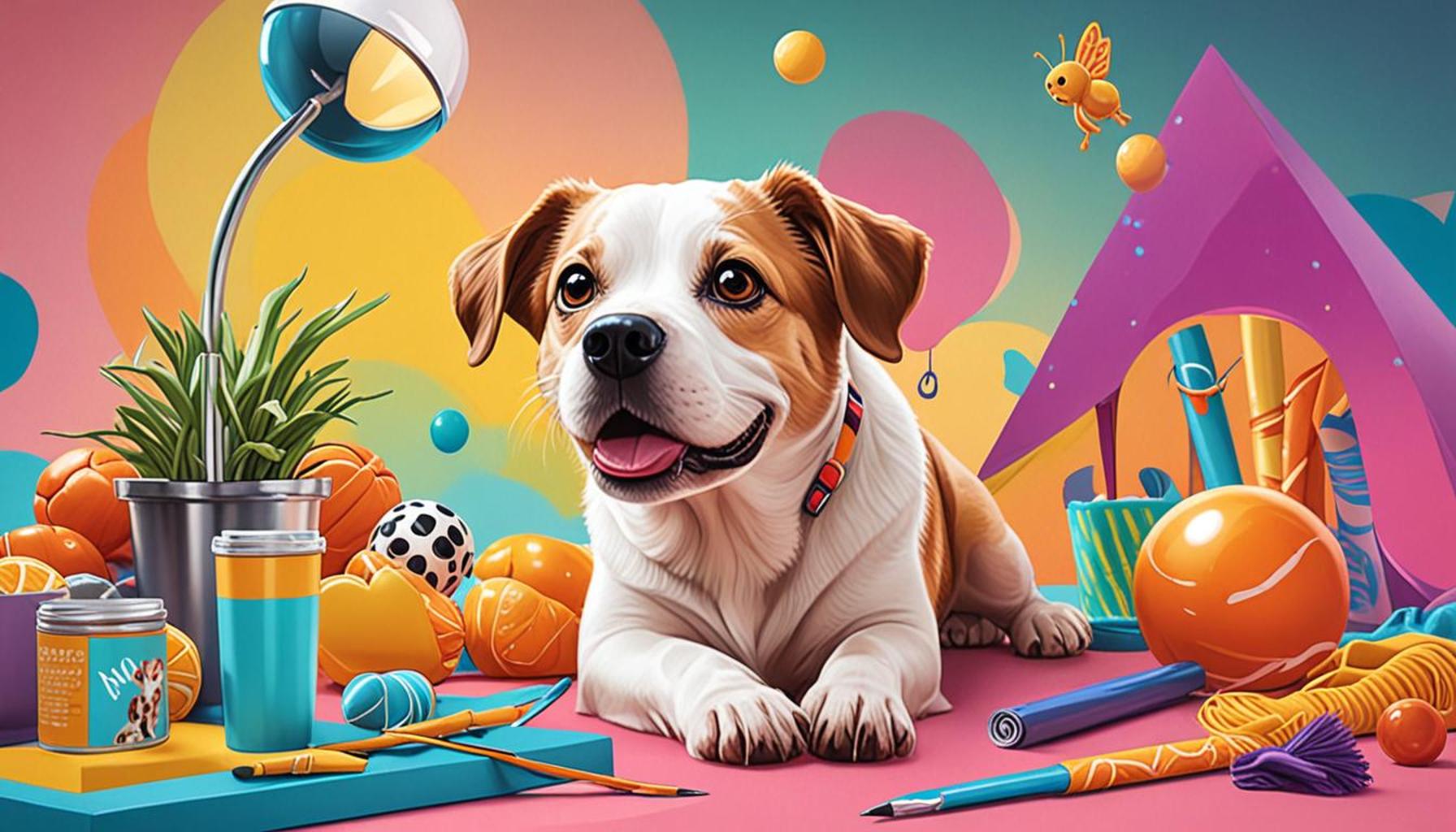How to Choose the Ideal Toy for Your Pet: Mental and Physical Stimulation
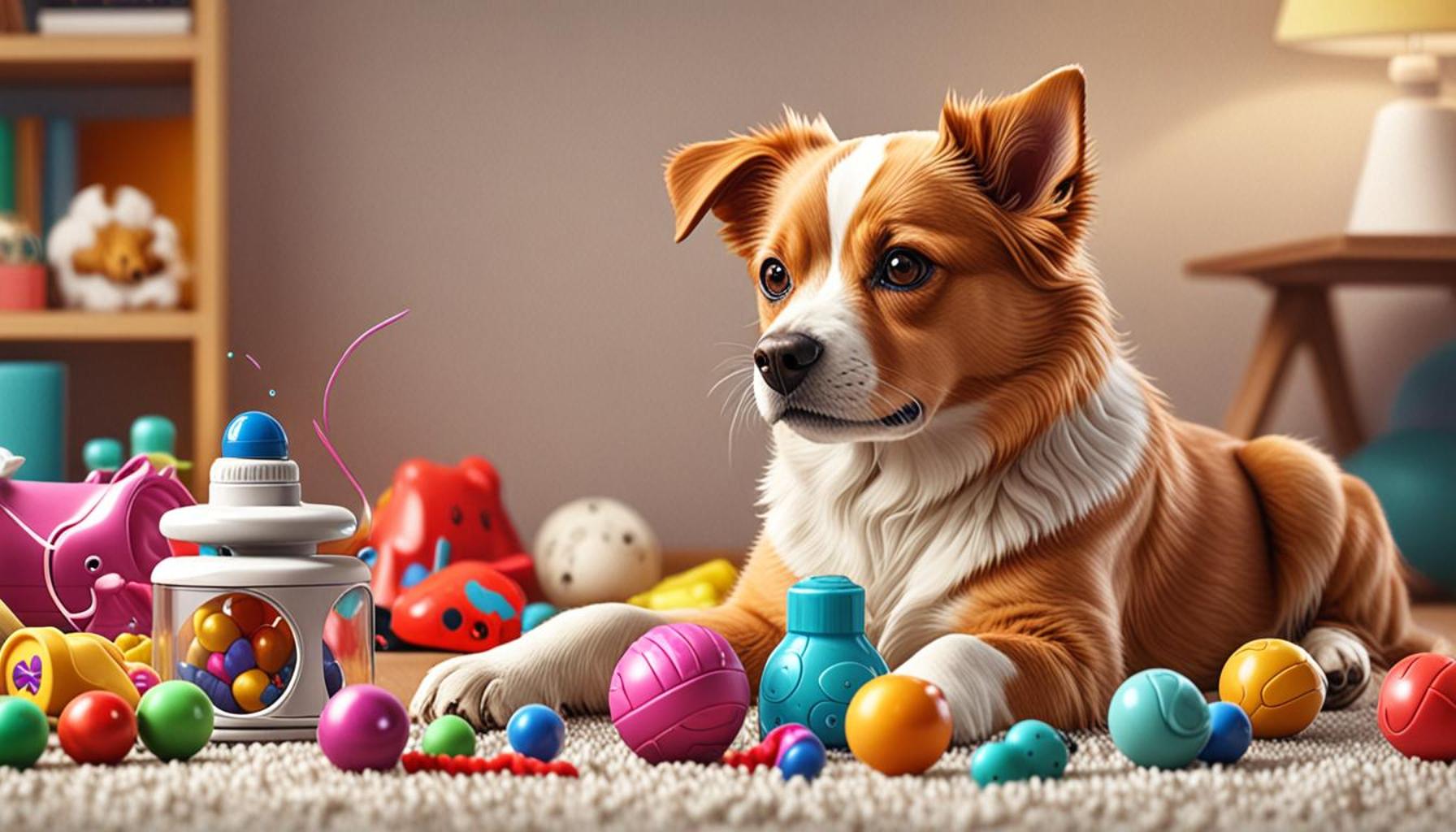
Understanding Your Pet’s Needs
Choosing the right toy for your pet is crucial for their mental and physical stimulation. With a myriad of options available in pet stores and online, the process of selecting the ideal toy can be daunting. However, a thoughtfully chosen toy does more than just entertain; it taps into your pet’s instincts, promotes their health, and significantly enhances their overall well-being.
The Importance of Play
Playtime is not merely a leisure activity; it is an essential component of a pet’s daily routine. Here are several compelling reasons why integrating play into your pet’s life is indispensable:
- Reduces boredom: Toys that engage your pet’s natural curiosity and energy can eradicate boredom. For instance, puzzle toys that require your dog to figure out how to access treats keep their minds active and occupied while you’re away from home.
- Encourages exercise: Regular play promotes physical health by stimulating muscles and improving cardiovascular fitness. Interactive tug-of-war toys or balls can encourage vigorous exercise for your pet, which is especially important for breeds prone to obesity.
- Strengthens bonds: Engaging with your pet through interactive toys fosters a deeper connection between the two of you. Activities such as fetch or hide-and-seek using toys encourage teamwork and build trust and affection.
Factors to Consider
When navigating the vast landscape of pet toys, it’s essential to consider several key factors to ensure you select the best option for your furry companion:
- Size: The toy should fit your pet well; a large toy can be unwieldy for a small breed, while a tiny toy can pose a choking hazard for larger pets. Always consult size guidelines and consider your pet’s age, as puppies and kittens often have different needs compared to adults.
- Durability: Look for toys crafted from high-quality materials that withstand rigorous chewing and play styles. For aggressive chewers, options like rubber toys tend to be more durable compared to plush counterparts.
- Type of stimulation: Assess what kind of play your pet enjoys. Some pets thrive on physical engagement, while others may require mental challenges. For example, a cat may enjoy feather wands that entice them to leap and pounce, whereas a dog might benefit from interactive treat-dispensing toys that stimulate their problem-solving skills.
By keeping these aspects in mind, you can shape playtime into a rewarding experience that provides significant benefits for your furry friend. As you delve deeper, you’ll also find a plethora of resources ranging from pet blogs to community forums where pet owners share their experiences and recommendations on toy selections. This exploration can further guide you in understanding your pet’s unique preferences and needs.
Choosing the right toys isn’t just about entertainment; it’s an investment in your pet’s happiness and health, paving the way for a fulfilling life together.
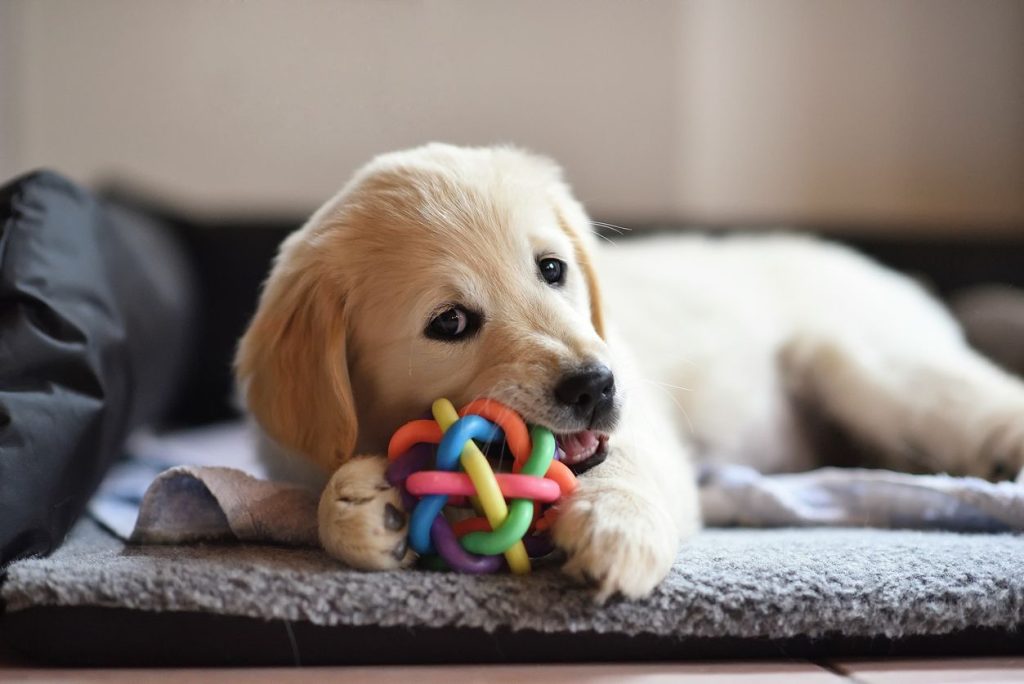
DIVE DEEPER: Click here to learn more about positive training
Types of Toys for Different Pet Personalities
Understanding your pet’s personality is vital when selecting toys that will effectively stimulate them both mentally and physically. Just like humans, pets can vary significantly in their play preferences. By recognizing distinct types of toys suited for various temperaments and activity levels, you can create a tailored playtime experience that keeps your furry friend engaged.
Active and Energetic Pets
For pets that are full of energy, such as labs, border collies, and jack russell terriers, toys that facilitate vigorous physical activity are essential. Here are some options that cater to their spirited nature:
- Fetch toys: Items like frisbees, balls, or tug ropes can provide chasing and retrieving fun, engaging their natural instincts to run and catch.
- Agility equipment: Invest in agility tunnels or jumps to create an engaging obstacle course that challenges their speed and coordination.
- Interactive toys: Look for toys that move or react in unpredictable ways, like automatic ball launchers, to keep their excitement levels high and engage their problem-solving skills.
Intelligent and Inquisitive Pets
On the other hand, pets such as retrievers or smart cats may thrive on mental challenges. Toys that promote cognitive engagement can keep their minds sharp and active:
- Puzzle feeders: Toys that dispense treats only when pets solve a challenge can stimulate critical thinking and problem-solving abilities.
- Hide-and-seek toys: Stuffed animals that allow you to hide treats and encourage your pet to discover them can be both exciting and fulfilling.
- Interactive electronic toys: These toys often move or make noises to spark interest, drawing attentive pets into playtime.
Gentle and Reserved Pets
For pets that are more relaxed or shy, like many senior dogs and certain breeds of cats, soft and less aggressive types of toys may be the most suitable. Consider the following:
- Plush toys: Soft, cuddly stuffed animals can provide comfort and companionship for pets that prefer gentler play.
- Chew toys: Durable yet soft rubber toys can satisfy the chewing instincts without causing dental issues or discomfort.
- Cognitive games: Interactive board-style games designed for pets can gently engage their curiosity without overwhelming them.
By understanding your pet’s personality and activity level, you will not only choose toys that keep them entertained but also enhance their quality of life. With ample activities tailored to their needs, you can create a stimulating environment that promotes well-being and joy, all through the power of play.
Understanding Your Pet’s Needs
When it comes to selecting the ideal toy for your pet, it’s essential to consider their unique needs. Different animals require different types of stimulation for both their minds and bodies. For instance, energetic dogs may thrive on interactive toys that promote physical activity, while cats might enjoy puzzle toys that challenge their intellect. Understanding your pet’s behavior can significantly guide your choice.
Types of Toys for Mental Stimulation
Toys that stimulate your pet’s mind are vital for preventing boredom, which can lead to behavioral issues. Puzzle toys are perfect for dogs and cats alike, as they encourage problem-solving. These toys often dispense treats, making your pet work for their rewards. Interactive toys that respond to your pet’s movements can also provide engaging and rewarding experiences, allowing them to exercise their cognitive skills.
Physical Activity and Its Importance
Physical stimulation is equally crucial for your pet’s health. Toys such as frisbees, tug ropes, and balls can promote active play. Engaging in physical activities with your pet not only strengthens your bond but also keeps them healthy. Regular playtime can help manage your pet’s weight and reduce the risk of obesity-related health problems. It’s essential to choose durable materials to withstand vigorous play and prevent choking hazards.
| Category | Description |
|---|---|
| Puzzle Toys | Foster problem-solving skills and keep your pet mentally engaged. |
| Interactive Toys | Encourage active play that stimulates both mind and body. |
| Fetch Toys | Promote exercise and strengthen the bond between owner and pet. |
Monitoring Your Pet’s Engagement
After you’ve chosen the toys, it’s essential to monitor how your pet engages with them. If they become bored with a toy quickly, it might be time to try something new. Rotating toys can also keep your pet interested and excited, providing them with fresh experiences.Exploring the various toys that cater to your pet’s mental and physical needs can lead to discovering the perfect fit that not only entertains but enriches their life.
LEARN MORE: Click here to discover the significance of consistency in pet training
Safety Considerations When Choosing Pet Toys
While the variety of play options can be exciting, it is essential to prioritize your pet’s safety when selecting toys. Toys that are not safe can lead to choking hazards, injuries, or even toxic ingestion. Therefore, understanding which materials and designs contribute to both enjoyment and safety is integral to your decision-making process. Here are key elements to consider:
Material Quality
The materials used in pet toys can directly affect their safety and durability. Toys made from non-toxic substances, such as natural rubber or organic cotton, are preferable. Avoid toys that contain harmful chemicals or small removable parts that could be swallowed or chewed off. For example, look for toys that are independently tested for safety, such as those certified by the American Society for Testing and Materials (ASTM) guidelines.
Size Matters
Selecting the right size toy for your pet is crucial. A toy that is too small poses a risk of being swallowed or lodged in your pet’s throat, while larger toys may not engage smaller animals as effectively. Generally, the following guidelines can help:
- Small dogs and cats: Chew toys or plushies should be manageable for their mouths—about the size of a tennis ball.
- Medium-sized pets: Look for toys that can withstand their chewing strength but are still easy to play with, like ropes or Kongs.
- Large dogs: Durable toys meant for aggressive chewers, such as heavy-duty rubber or robust interactive toys, are ideal to withstand their might.
Interactive vs. Solo Play Toys
Finding the balance between interactive and solo play toys is also essential for mental and physical stimulation. Engaging with your pet through play fosters bonding and can also teach them tricks or commands. Here are considerations for each type:
- Interactive toys: Designed for joint play sessions, these can include tug-of-war ropes or fetch toys. Forms of engagement help improve your pet’s social skills and may even reduce anxiety.
- Solo play toys: Puzzle toys or treat-distributing balls keep pets entertained without direct supervision, promoting independent play and mental stimulation.
Regular Toy Rotation
To maintain your pet’s interest and prevent boredom, consider rotating their toys regularly. Just like humans, pets can become disinterested in toys they see every day. After introducing a new toy, store some of their older toys away for a few weeks before reintroducing them. This simple method can reignite enthusiasm and provide them with fresh stimulation. Additionally, observe how your pet interacts with different toys, as their preferences may change over time.
By being mindful of safety, considering the materials and size, engaging actively through play, and making regular adjustments to their toy collection, you will optimize your pet’s playtime. A well-rounded toy selection not only fuels their physical activity but also enhances their mental sharpness, ensuring a happy and healthy companion.
DIVE DEEPER: Click here to discover more about pet mental health
Conclusion: The Path to Optimal Pet Playtime
In conclusion, choosing the ideal toy for your pet is essential for enhancing their mental and physical well-being. By focusing on safety, material quality, and the appropriate size, you can ensure that your pet enjoys hours of safe and engaging playtime. Moreover, balancing interactive and solo play toys can enrich your pet’s experience, fostering stronger bonds while also promoting independent exploration. Regularly rotating their toy selection keeps playtime fresh and exciting, reducing the risk of boredom and ensuring ongoing stimulation.
As a responsible pet owner, it’s important to observe your pet’s preferences and behaviors to find toys that keep them interested. This ongoing engagement isn’t just about fun; it plays a crucial role in your pet’s overall health and happiness. With a thoughtful approach to toy selection, you have the power to enhance your pet’s quality of life significantly.
Ultimately, investing the time to research and choose the right toys not only contributes to your pet’s physical exercise but also sharpens their mental skills, leading you to a joyful, lively companion. So, equip yourself with the knowledge gained from this article and embark on the journey to revolutionize your pet’s playtime. The right toys await, ready to stimulate their minds and keep their tails wagging!
